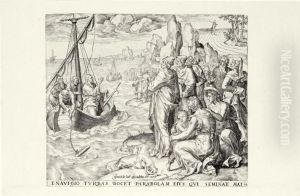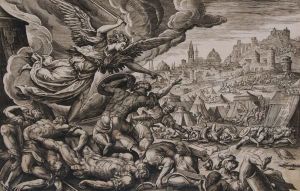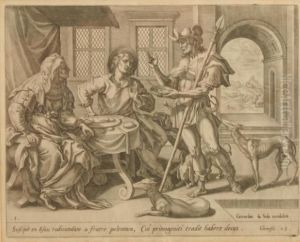Gerhard De Jode Paintings
Gerhard de Jode was a cartographer, engraver, and publisher who lived and worked during the 16th century in Antwerp, which was one of the epicenters for the arts and map publishing in Europe during that period. Born in 1509, de Jode was part of the vibrant intellectual and artistic scene that flourished in the Low Countries, particularly in the city of Antwerp, a hub for the Northern Renaissance.
Not as widely known as his contemporaries Abraham Ortelius and Gerardus Mercator, de Jode nonetheless made significant contributions to the fields of cartography and engraving. He established his own publishing house in 1551, which produced maps, atlases, and illustrations. De Jode's major work is the 'Speculum Orbis Terrarum', an atlas that was first published in 1578. Although it was well-regarded for its accuracy and the quality of its engravings, it did not achieve the same commercial success as Ortelius's 'Theatrum Orbis Terrarum', which had the advantage of being the first of its kind and was published several years earlier, in 1570.
Gerhard de Jode's work was characterized by meticulous engraving and a commitment to improving upon the geographic knowledge of the time. His atlas included up-to-date maps based on the latest discoveries and was later expanded and republished by his son, Cornelis de Jode, in 1593, under the title 'Speculum Orbis Terrae'. Unfortunately, it still could not rival the popularity of the atlases produced by Ortelius and Mercator.
Throughout his career, de Jode also produced a variety of other works including individual maps and plates for religious and historical texts. His engravings can be distinguished by their detail and craftsmanship, which were held in high esteem by his contemporaries.
Gerhard de Jode passed away in 1591, leaving behind a body of work that would be appreciated by collectors and scholars of cartography in the centuries to follow. Although his publishing enterprise was not a commercial triumph in his lifetime, the historical value of de Jode's work has been recognized posthumously, and original prints of his maps and atlases are now highly sought after by collectors and institutions.


